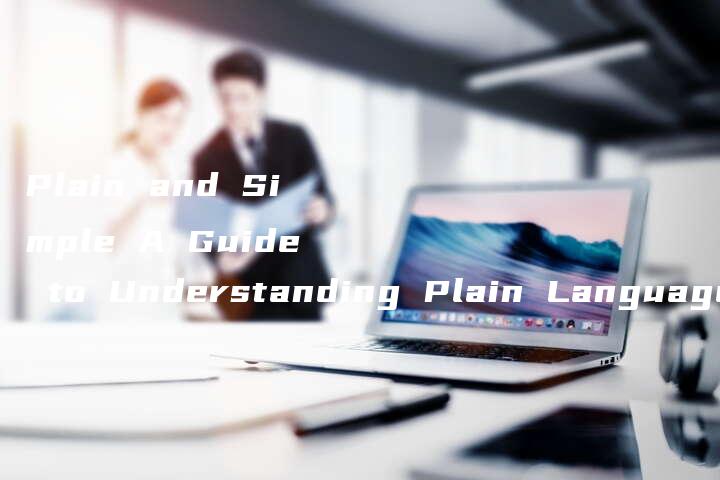
What is Plain Language?
Plain Language is a way of writing that is clear, concise, and easy to understand. It is free from technical jargon, complicated sentences, and unnecessary words. The purpose of Plain Language is to make information accessible to everyone, regardless of their education level or background.
Why is Plain Language important?
Plain Language is important because it helps to bridge the gap between the writer and the reader. When information is presented in a way that is easy to understand, people are more likely to read it, comprehend it, and act on it. Plain Language also promotes transparency and accountability, as it allows people to make informed decisions and hold organizations and governments accountable for their actions.
Who benefits from Plain Language?
Everyone benefits from Plain Language. People with low literacy levels or English as a second language can understand information more easily. People with cognitive or learning disabilities can also benefit from Plain Language, as it reduces the cognitive load required to process information. Even people with high levels of education and expertise can benefit from Plain Language, as it allows them to quickly and efficiently understand complex information.
What are the key principles of Plain Language?
The key principles of Plain Language include using clear, concise language, organizing information logically, avoiding technical jargon, and using plain English words. Other principles include using active voice, using short sentences, and breaking up information into easily digestible chunks. The main goal is to make information as accessible and easy to understand as possible.
How can I learn more about Plain Language?
There are many resources available to help you learn more about Plain Language. The book Plain and Simple: A Guide to Understanding Plain Language is a great starting point, as it provides a comprehensive overview of the principles and techniques of Plain Language. There are also many online resources, including plainlanguage.gov, which offers a wealth of information and resources on Plain Language. Finally, there are many Plain Language practitioners and consultants who can provide training and guidance on how to implement Plain Language in your organization or writing.
 中小企业网
中小企业网




